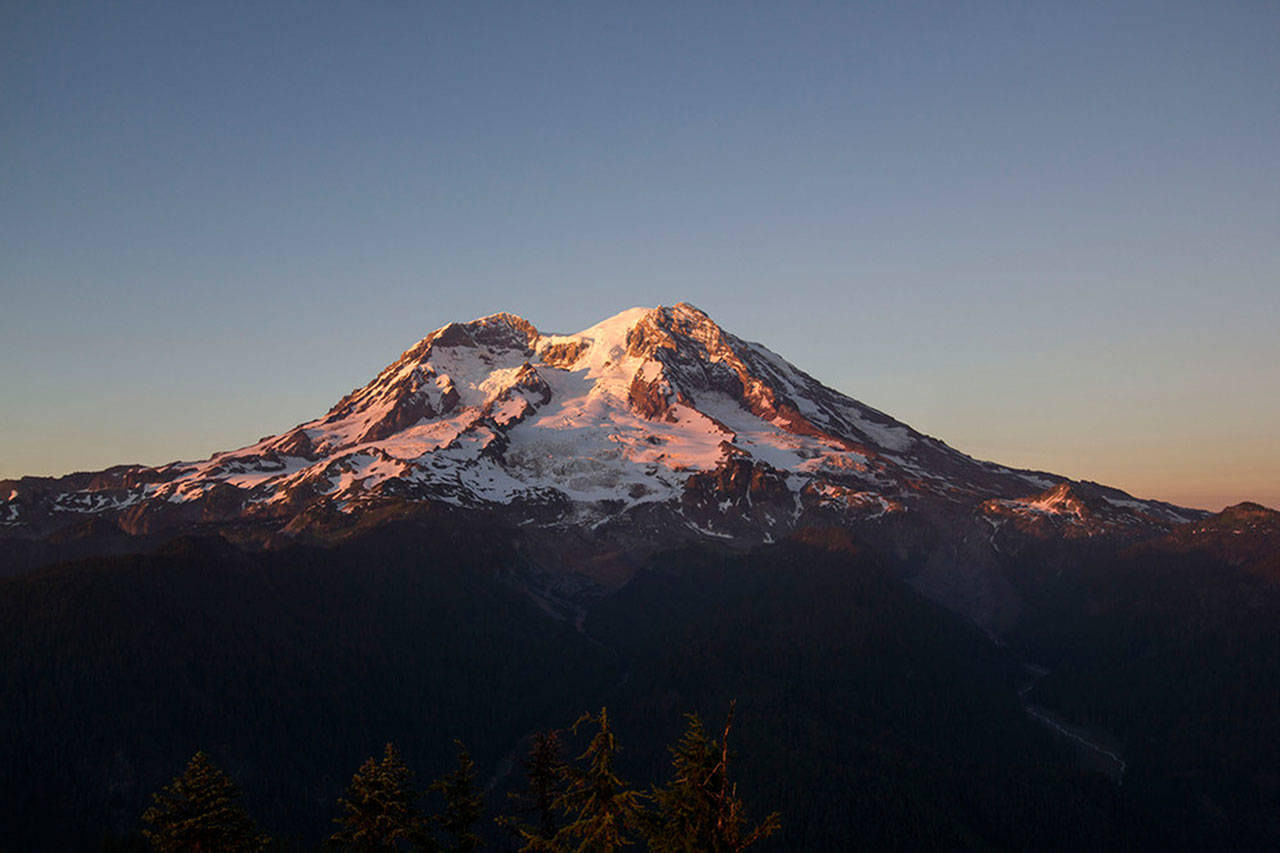A day after Mount Rainier National Park announced this year’s opening of Chinook Pass would be delayed, a study was released spelling out the fiscal impact the park plays on local economies.
Foothills communities like Enumclaw are keenly aware that, during the past five years, visitation to Mount Rainier National Park has steadily increased. Moreover, the park anticipates the trend will continue this summer.
“Mount Rainier National Park welcomes visitors from around the Pacific Northwest, across the country and around the world,” Park Superintendent Chip Jenkins said.
Advocating for the national park system, he noted that “tourism is a significant driver in the national economy, returning $10 for every $1 invested.”
Tourism is significant as well at the hometown level, including Enumclaw.
That’s why a small Plateau group was high on the mountain May 3, treated to a guided tour of roadwork being performed this spring. Along for the scenic ride – coordinated by the state Department of Transportation and National Park Service – were Troy Couch, executive director of the Enumclaw Chamber of Commerce, and Buckley Mayor Pat Johnson, among others.
“Obviously it’s a concern,” Couch said of anything that prohibits visitors from motoring around the mountain.
During the trip up SR 410 and on to Cayuse Pass, “we just wanted to keep it in their minds, getting things done as quickly as possible would be appreciated.”
A new report shows there were more than 1.4 million recreational visitors to Mount Rainier National Park during 2017. They spent an estimated $50.6 million in communities surrounding the park resulting in a net impact to the economy of approximately $63.5 million.
The information for Mount Rainier National Park is part of a peer-reviewed visitor spending analysis that shows $18.2 billion of direct spending by 330.8 million park visitors in communities within 60 miles of a national park.
According to the 2017 report, most park visitor spending was for lodging/camping (32.9 percent) followed by food and beverages (27.5 percent), gas and oil (12.1 percent), souvenirs and other expenses (10.1 percent) and admissions and fees (10.0 percent).


